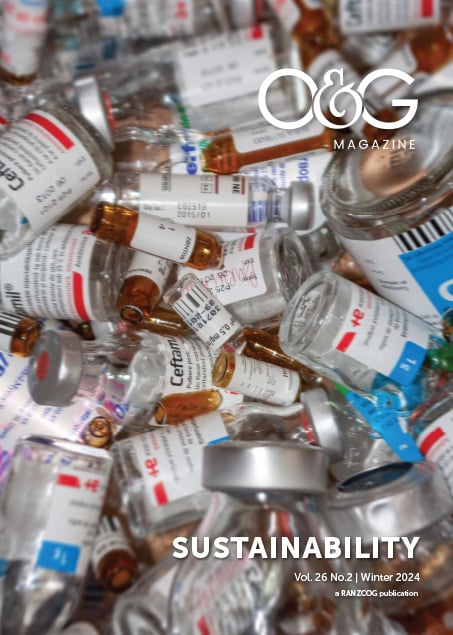In the heart of te ao Māori (Māori world view), the concept of ‘whenua’ holds deep significance, a significance that extends to the essence of birth and the interconnectedness of land, ancestry, and identity. Understanding the dual meaning of ‘whenua’ in te reo Māori offers insights into the holistic view held by many wāhine Māori, and the broader cultural context in which childbirth occurs1.
Whenua encompasses more than just physical land; it extends to the essence of birth, life, and the interconnectedness of all living things. In te reo Māori, ‘whenua’ has a dual meaning. Whenua refers to the physical land and landscape. This interpretation speaks to many aspects of the environment that sustain and nourish life. However, whenua extends beyond this one translation. It also has meaning tied to birth and ancestry. In this context, whenua represents the placenta, this connects a person to their ancestral land. The whenua is traditionally buried in the whenua (land) of the child’s ancestors, symbolising a spiritual bond between the individual, their ancestral roots, and the land they have walked on.
The connection of people and land is evident in many aspects of te ao Māori2. In the ceremony of pōwhiri (traditional welcome onto Māori land), visitors are formally welcomed onto the land, acknowledging their connection to the whenua and the ancestors who inhabit it. This ritual serves as an expression of the permanent bond between the people and their land, a bond that exceeds time and space. Similarly, the concept of kaitiakitanga (guardianship) underscores the Māori commitment to protecting and preserving the whenua for future generations. As guardians of the land, Māori regard themselves as caretakers entrusted with the responsibility of safeguarding the whenua for the benefit of all living beings.
In the rapidly evolving healthcare landscape, it is important that the challenges faced by wāhine Māori patients are not forgotten. Urbanisation, environmental destruction, and the loss of traditional practices pose significant obstacles to preserving the cultural nuances of childbirth experiences. RANZCOG needs to actively engage with our Māori communities to address these challenges and ensure that culturally safe care is a cornerstone of practice3.
Through collaborative efforts with community leaders, cultural advisors, and healthcare organisations, RANZCOG can advocate for policies and practices that support the preservation of Māori traditions during childbirth. By integrating cultural competency training into professional development initiatives, RANZCOG members can be equipped with the knowledge and skills needed to provide respectful and culturally safe care to all patients. There is unique opportunity to support and empower our Māori patients in preserving their cultural practices during childbirth. By facilitating discussions and providing options for placental burial that align with cultural beliefs, this can ensure that the childbirth experience is meaningful and respectful of patients’ cultural backgrounds by embracing the dual meaning of ‘whenua’ in te reo Māori, clinical practice is enriched and allows the fostering of deeper connections with whānau.
The practice of returning the placenta to mothers after childbirth is rooted in various cultural beliefs and traditions worldwide. In many cultures, the whenua is considered a sacred and vital organ symbolising the bond between mother and child, and its return to the mother is seen as a way to honour this connection. Some cultures view the whenua as a spiritual or life-giving entity and returning it to the whānau is believed to promote the health and wellbeing of both mother and baby4.
In addition to its symbolic significance, the placenta also holds practical value in certain cultures. For example, in traditional Chinese medicine, the placenta is believed to contain nourishing properties that can benefit postpartum recovery and overall health. Similarly, in other Indigenous cultures, the placenta has ritual and great value placed upon it5.
When returning whenua to whānau after birth, endeavouring to make sure the whenua is delivered promptly and safely is vital. If whānau cannot take it home soon after birth, it should be stored in a refrigerator that does not contain any food. Another alternative is to keep the placenta in a container on ice and in a portable cooler bag for no more than 48 hours prior to burial. If the whenua is needed for further examination and cannot be taken home by the whānau, communication of where the whenua is going, what is being examined, and when it can be collected will help whānau feel included and respected throughout the process.
However, it is important to recognise that not all Māori or Indigenous mothers may wish to participate in this practice, or non-Indigenous mothers may want to take their whenua home. Healthcare providers should always respect the individual preferences and beliefs of their patients. Cultural competence and safety are key in providing respectful and inclusive care to mothers from diverse cultural backgrounds, whether they choose to retain their placenta or not. By honouring and accommodating cultural traditions surrounding childbirth, healthcare providers can help implement cultural safety and support for mothers during labour and postpartum6.
References
- Simmonds, N. (2016). Transformative Maternities: Indigenous Stories as Resistance and Reclamation in Aotearoa New Zealand. In: Robertson, M.Tsang, P. (eds) Everyday Knowledge, Education and Sustainable Futures. Education in the Asia-Pacific Region: Issues, Concerns and Prospects, vol 30. Springer, Singapore. doi.org/10.1007/978-981-10-0216-8_6
- Moewaka Barnes, H., & McCreanor, T. (2019). Colonisation, hauora and whenua in Aotearoa. Journal of the Royal Society of New Zealand, 49(sup1), 19–33. doi.org/10.1080/03036758.2019.1668439
- Stevenson, K. (2018). Mā te wāhine, mā te whenua, ka ngaro te tangata. Wāhine and whānau experiences informing the maternal-infant health care system (Thesis, Doctor of Philosophy). University of Otago. Retrieved from hdl.handle.net/10523/8474
- Moeti, C., Mulaudzi, F. M., & Rasweswe, M. M. (2023). The Disposal of Placenta among Indigenous Groups Globally: An Integrative Literature Review. International Journal of Reproductive Medicine, 2023, 6676809. doi.org/10.1155/2023/6676809
- Leung, P.C. (2011). Placenta and Umbilical Cord in Traditional Chinese Medicine. In: Bhattacharya, N., Stubblefield, P. (eds) Regenerative Medicine Using Pregnancy-Specific Biological Substances. Springer, London. doi.org/10.1007/978-1-84882-718-9_3
- Simmonds, N. B. (2017). Honouring our ancestors: Reclaiming the power of Māori maternities. In H. Tait Neufeld & J. Cidro (Eds.), Indigenous Experiences of Pregnancy and Birth. Ontario, Canada: Demeter Press. researchcommons.waikato.ac.nz/items/9954b243-76fb-46b4-a71e-692d01393a3e






Leave a Reply